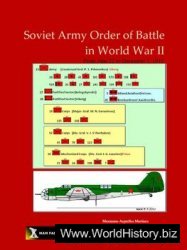1972). A group of local bus company owners and operators combine in late 1963 to form this carrier at Lima. Employing Douglas DC-3s initially, service is inaugurated from Lima to seven major domestic cities in January 1964. In February, two Lockheed L-749A Constellations are acquired from Eastern Air Lines in the U. S. Four more arrive before year’s end.
In late 1965, Eastern, in exchange for managerial and technical assistance contracts, purchases a third of the carrier. In addition to its regularly scheduled routes, LANSA now begins charter and inclusive-tour flights to the tourist destinations and ruins in or near Arequipa, Iquitos, Machu Picchu, and the Chan-Chan area near Trujillo. An L-1049E once flown by Qantas Empire Airways (Pty.), Ltd. is leased during the year.
Flight 501, an L-749 with 6 crew and 43 passengers, disappears into the Andes on April 27, 1966, during a flight from Lima to Cuzco; the wreck is found two days later on Mount Talsula, near the former city, and there are no survivors.
Despite Eastern’s stake and influence, the airline now faces poor economic times and suspends operations until September. During its hiatus, the company is reorganized and the Eastern Air Lines interest is bought out.
With its fortunes on the mend in 1967, LANSA upgrades its fleet during the summer. Four Japanese-made Nihon YS-11As are purchased new and upon entering service, take over the company’s domestic routes.
While maintaining its routes and services in 1968, LANSA continues to operate on the edge with regard to both finances and safety. Still, the company in need of more capacity to its high-altitude airports and on international services, is able to place orders with Boeing for three Lockheed Electras traded in by Braniff International Airways on new jetliners.
The first ex-Braniff L-188A is delivered on August 5, 1969. While on a Cuzco to Lima flight with 100 aboard, including 54 U. S. students who are members of the student exchange organization International Fellowship, Inc., the Lockheed crashes near the flight’s point of origin on August 9, 1970. Ninety-nine people aboard the plane are killed, along with two on the ground.
A second former Braniff turboprop is received later in the month and a third in October.
A fourth L-188A is acquired in April 1971. The 1970 Electra disaster is followed by a second on Christmas Eve. While en route from Lima on December 24, Flight 508, an L-188A with 6 crew and 86 passengers, is hit by lightning, causing a fire in the right wing, which separates; the turboprop crashes in flames at Puerto Inca (91 dead).
The uproar caused by the second tragedy within six months causes the Peruvian government to withdraw the company’s operating permit on January 4, 1972. Almost out of cash, LANSA stops flying immediately.
Meanwhile, a survivor of the Christmas crash is found in the jungles of eastern Peru the next day; the wreckage is found on January 6 and there are no other survivors.
LAO (LINEAS AEREAS OCCIDENTALES, S. A. de C. V.): Mexico (1933-1935). Having relocated to Burbank Airport following the summer 1933 demise of the California portions of his Varney Speed Lines System, Varney Speed Lines Air Service, U. S. airline pioneer Walter Varney negotiates an airmail contract with the government of Mexico and establishes LAO as another subsidiary late in the fall. The son of the Mexican president is named company vice president.
On April 10, 1934, with a 20-year Mexican government mail route and concession in hand, Varney inaugurates thrice-weekly service from Los Angeles. Employing 1 Lockheed Model 9 Orion and 2 Model 5 Vegas, cities served include Mexico City via San Diego, Tijuana, Mexicali, Nagales, Hermasillo, Cuidad Obregon, Los Machis, Mazatlan, and Guadalajara. Extensions are made to offer weekly flights to La Paz in Baja California from Mazatlan and multistop from Mexico City to Tapachula.
Fearful of giving offense to Pan American Airways (PAA), the Mexican government, in January 1935, revokes Varney’s arrangements and hands the mail routes and subsidies over to a new PAA subsidiary, Aerovias Centrals, S. A. de C. V. Not forewarned, Varney barely has time to get his Orion and one Vega out of the country before they are impounded for outstanding fuel bills; one Model 5 is caught and the major equipment and furnishings of eight LAO stations are impounded.




 World History
World History









